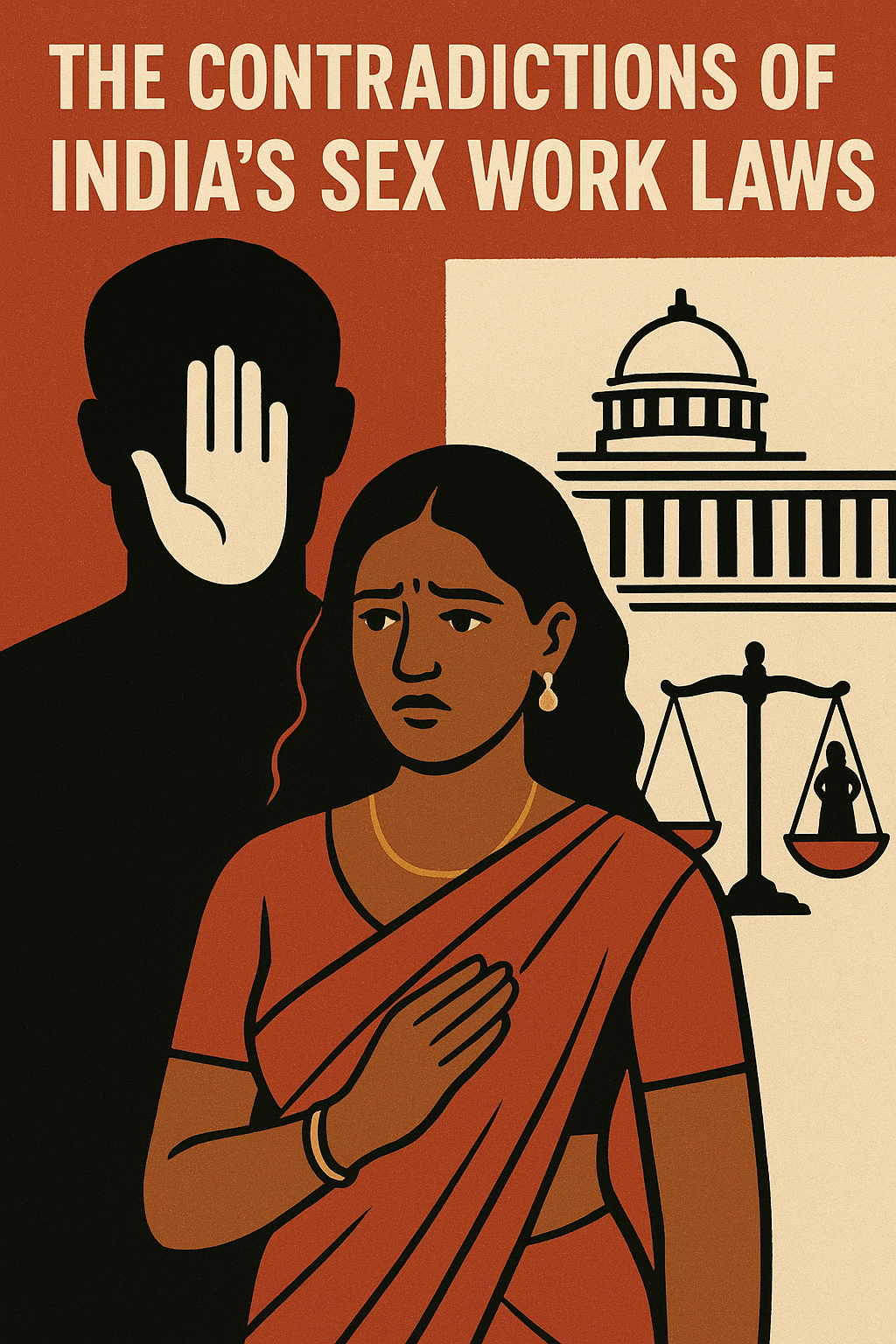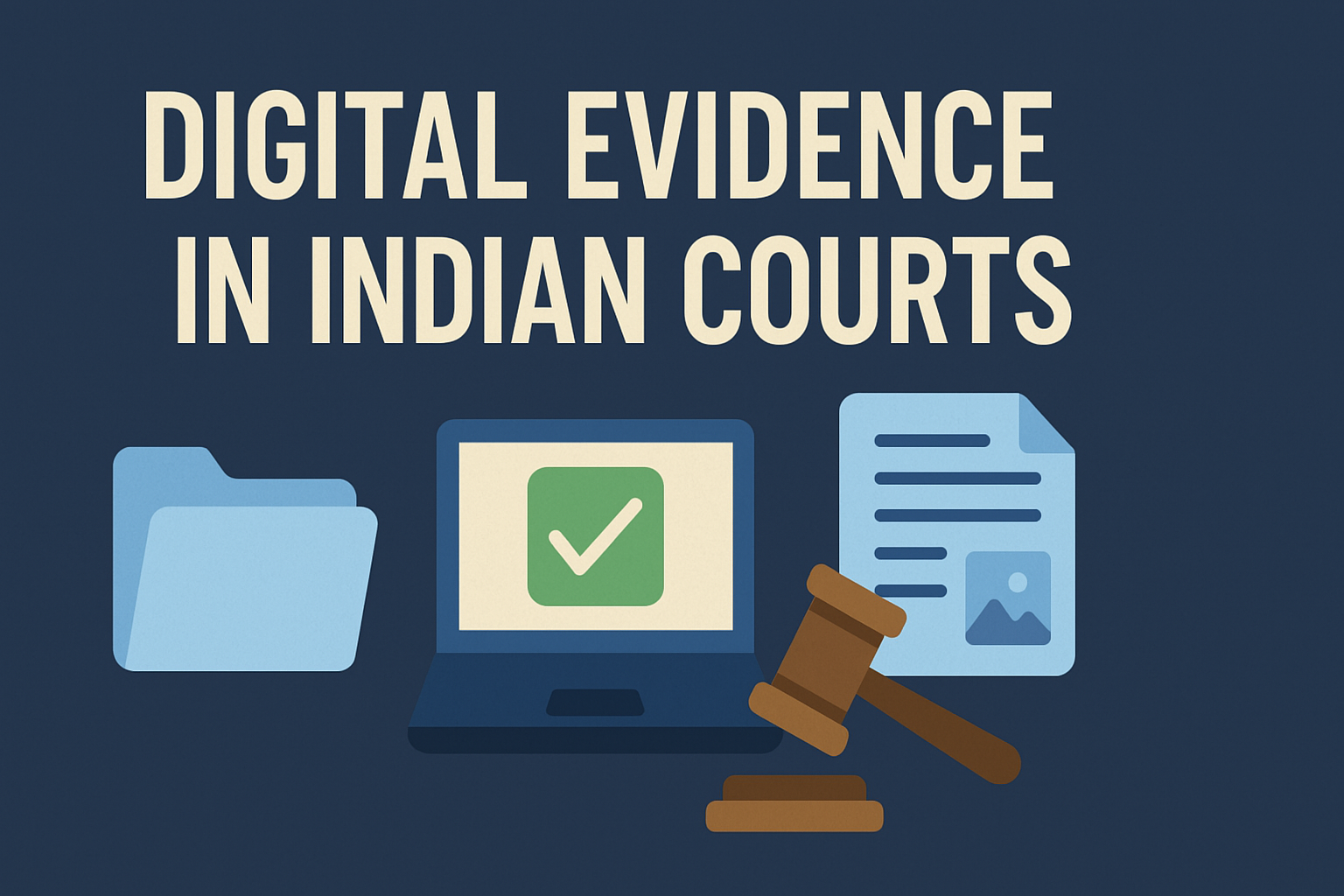



Author: Sakshi Verma
Institution: BALLB, Lords University
As the world becomes increasingly digital, communication, business, governance, and crime are all taking place through digital platforms. In this context, digital evidence has gained importance in both criminal and civil trials. With the rise in data from emails, social media, surveillance cameras, audio recordings, cloud storage, and other digital platforms, handling such evidence has become both essential and complex. In Indian courts, digital evidence can provide objective and reliable proof—if properly handled. However, there are ongoing concerns about its admissibility, verification, and preservation. This article explores the legal framework, major case laws, challenges, and the reforms needed to strengthen the use of digital evidence in the Indian legal system.
As technology continues to shape how we live and communicate, electronic data has emerged as a key component in legal disputes. Digital evidence refers to any form of information that exists in electronic format and can be presented in a courtroom. Examples include email conversations, call logs, location data from GPS, computer files, social media interactions, and data stored in the cloud.
What makes digital evidence different from traditional evidence is its fragile and invisible nature. A physical document, once signed and sealed, remains relatively stable. But a digital file can be easily altered, erased, or duplicated without leaving obvious signs. Because of this, the method of collecting, preserving, and producing digital evidence becomes as important as the content itself.
The concept of “chain of custody” is vital. It ensures there’s a clear and documented history of who handled the evidence, when, and how. If this chain is broken or unclear, the evidence may be challenged or rejected. Therefore, courts often depend on the involvement of digital forensics experts, who use specialized tools to create exact replicas of devices, verify the originality of files, and detect any signs of manipulation.
Complications also arise when evidence is stored on servers located in other countries or when it’s encrypted and protected by passwords. In such cases, investigators often need permission from foreign authorities, or technical support from tech companies, which can delay justice.
Digital evidence is now central to many types of cases—ranging from cybercrime and online fraud to marital disputes and workplace misconduct. To keep pace, the Indian legal system must build better awareness among judges, lawyers, and law enforcement about how digital trails can be preserved, verified, and admitted in court.
Legal Provisions in India
India has adapted to the digital era by updating its legal provisions. With the Information Technology Act, 2000, several changes were also made to the Indian Evidence Act, 1872, Indian Penal Code, 1860, and Criminal Procedure Code, 1973. Important sections that cover digital evidence include:
– Section 3: Includes electronic records within the meaning of ‘evidence’.
– Sections 65A & 65B: Define rules for admitting electronic records.
– Section 45A: Permits expert opinion on electronic data.
– Sections 85A, 85B, and 85C: Provide legal presumptions regarding electronic agreements and digital signatures.
Section 65B: The Backbone of Admissibility
Section 65B has become the most discussed provision in the context of digital evidence. It mandates that for an electronic record to be admissible in any proceedings, it must be accompanied by a certificate fulfilling the criteria laid out under Section 65B(4). The certificate must contain:
A statement describing how the electronic record was produced;
Details about the device used for producing the record;
A declaration that the device was used regularly;
A declaration of the accuracy and integrity of the contents.
This certificate must be signed by someone occupying a responsible position related to the device or its output. The purpose is to authenticate that the electronic record was not tampered with and was obtained in a legitimate manner.
Landmark Case Laws on Admissibility
Categories and Examples of Digital Evidence
Communication Records: SMS, WhatsApp chats, email threads.
Multimedia Evidence: Audio recordings, CCTV, screen recordings.
Transaction Records: UPI logs, online banking statements.
Web-Based Evidence: Social media posts, website screenshots.
Device Logs: GPS data, call logs, mobile tower locations.
Practical Challenges Faced in Courts
Expert Opinion and Role of Forensics
Under Section 45A of the Indian Evidence Act, the opinion of an examiner of electronic evidence is admissible. Digital forensic experts play a crucial role in:
Extracting deleted files;
Authenticating metadata;
Analyzing devices for malware;
Validating timestamps and GPS logs.
For example, in cybercrime cases involving morphed images or doctored videos, forensic analysis is often the only way to verify truth.
Global Standards and Indian Context
Globally, the collection and handling of digital evidence is guided by clear rules and well-documented procedures. In the United States, for example, the Federal Rules of Evidence (FRE) lay down the principles for admitting electronic data in court. These rules focus on verifying that digital evidence is relevant, reliable, and obtained through lawful means. Moreover, American agencies rely on standards developed by bodies like NIST and SWGDE, which provide step-by-step protocols for preserving the integrity of digital records.
Similarly, in the United Kingdom, law enforcement follows the ACPO Good Practice Guide, which emphasizes that digital evidence should not be altered during collection and must only be handled by trained personnel. These principles are further supported by laws such as the Computer Misuse Act, 1990 and Criminal Procedure and Investigations Act, 1996, ensuring a legal and ethical approach to cyber investigations.
In contrast, India lacks a nationwide policy for dealing with digital evidence. While Section 65B of the Indian Evidence Act provides the basic rule for admissibility, there is no uniform method across the country for how such data should be retrieved or stored. As a result, different agencies and police departments often follow their own approaches, which leads to confusion and inconsistency.
Despite this, India has made some positive efforts. Institutions like the Computer Emergency Response Team (CERT-In) are working to monitor cyber threats and train law enforcement. NASSCOM’s Data Security Council of India (DSCI) and the Centre for Development of Advanced Computing (CDAC) have also stepped in to offer specialized training in cyber forensics.
Some state police units have created digital forensics labs and cybercrime cells, but progress is uneven. Without a standard operating procedure (SOP) adopted nationwide, the collection and authentication of digital evidence often vary from one region to another. This gap becomes especially problematic in complex or high-profile cases involving multiple jurisdictions.
Privacy concerns also add another layer of complexity. In the absence of a fully enacted data protection law (as of 2025), the risk of unauthorized surveillance or misuse of personal data is real. Legal clarity is urgently needed to ensure digital investigations respect citizens’ rights while supporting the administration of justice.
To align with global best practices, India must invest in creating a centralized digital evidence framework, introduce SOPs for law enforcement, promote regular training for legal professionals, and strengthen cross-border cooperation for accessing digital data stored overseas.
Suggested Reforms and Way Forward
Conclusion
Digital evidence has become an indispensable tool in modern litigation. While Indian courts have laid down important precedents on its admissibility, the actual enforcement still suffers due to gaps in infrastructure, awareness, and uniformity in procedure. Section 65B has emerged as both a protector of authenticity and a procedural hurdle. Bridging the technological gap in the judiciary, ensuring expert involvement, and updating legal frameworks will help ensure that digital evidence not only gets admitted but also leads to fair and speedy justice. India’s digital future depends on how confidently and competently its legal system handles digital evidence.